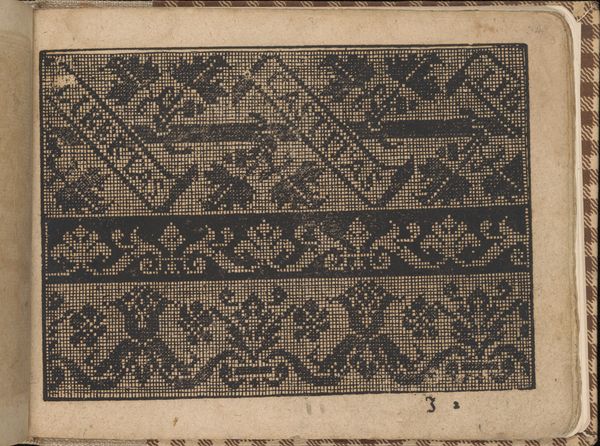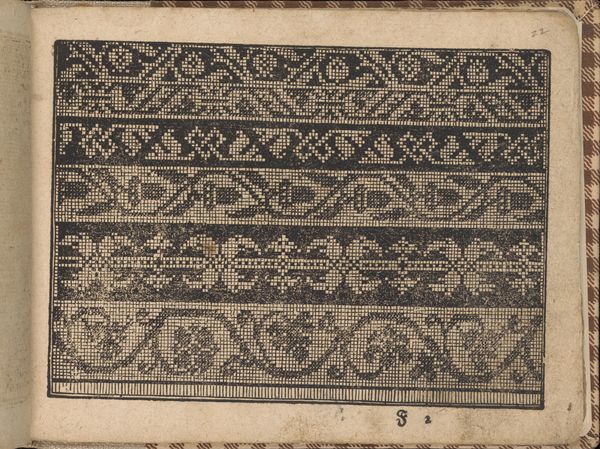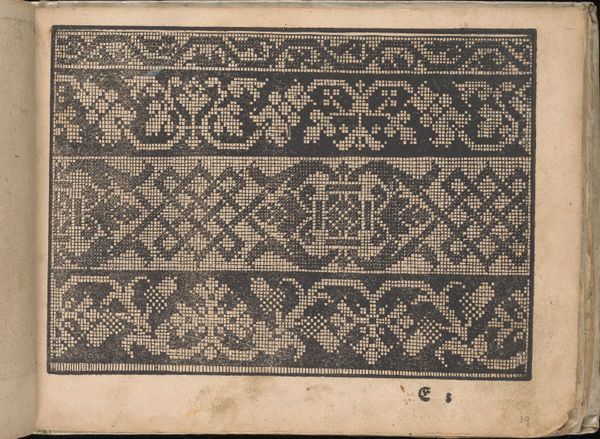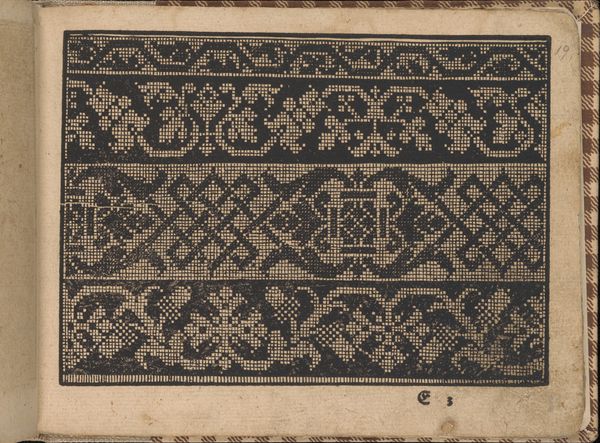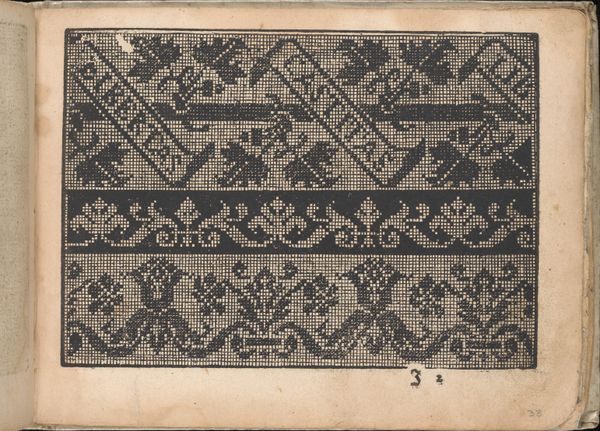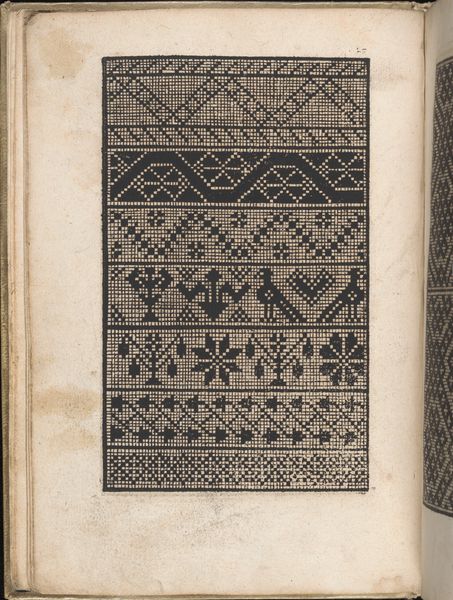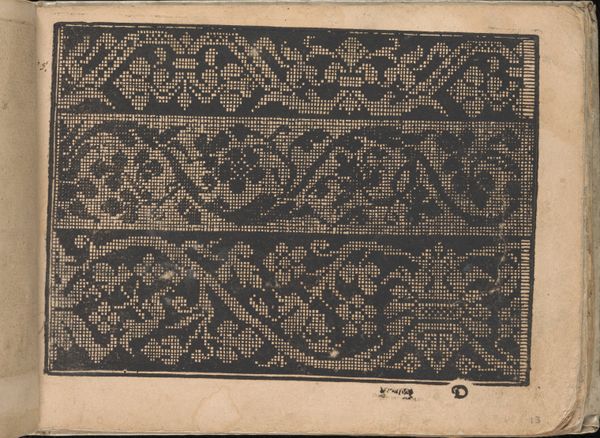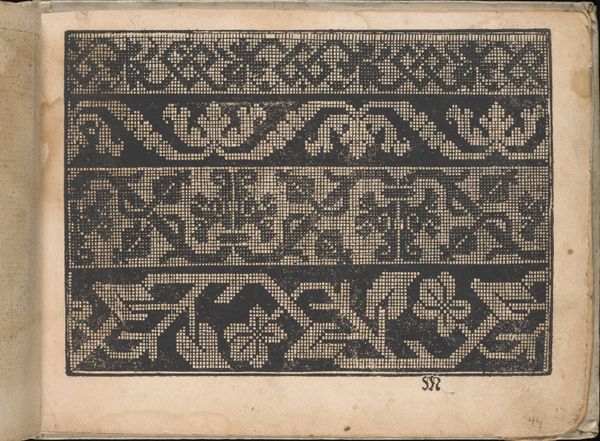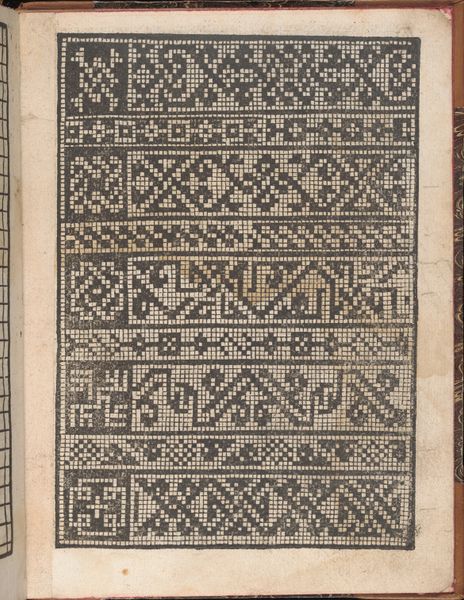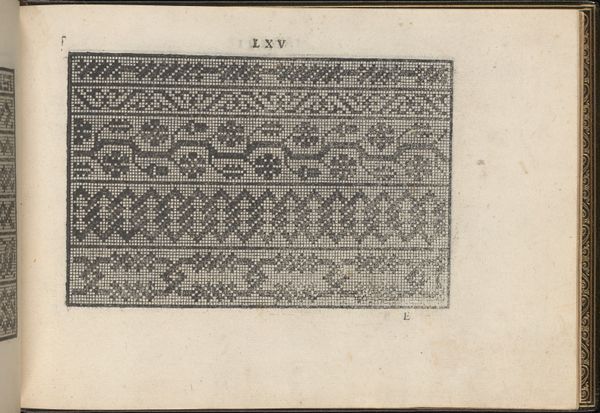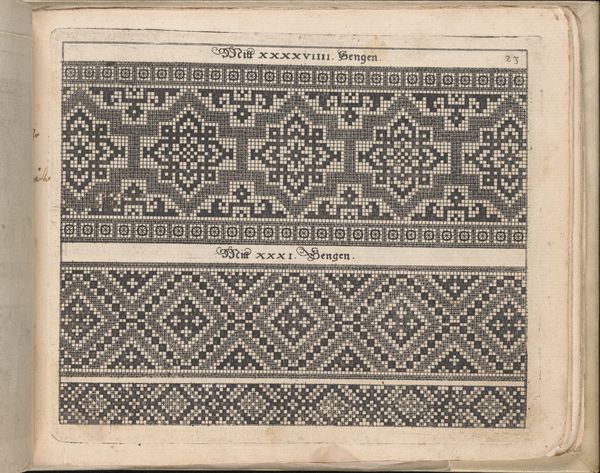
drawing, ornament, print, woodcut
#
drawing
#
ornament
# print
#
pattern
#
11_renaissance
#
woodcut
#
northern-renaissance
Dimensions: Overall: 6 1/8 x 7 7/8 in. (15.5 x 20 cm)
Copyright: Public Domain
Curator: Let’s turn our attention to a page from Bernhard Jobin's "Neu künstlich Modelbuch," created in 1598. Specifically, we’re viewing page 28r, currently held at The Metropolitan Museum of Art. This print is an intriguing example of late Renaissance design. Editor: My initial reaction is one of organized constraint. The sharp delineation of forms against the off-white paper projects both boldness and precision. Its geometric severity almost foreshadows modern graphic design. Curator: Indeed, Bernhard Jobin’s work, executed in woodcut, utilizes the visual language typical of pattern books—offering models and inspiration for artisans. Its intrinsic quality hinges on geometry: bands and repetitions are laid bare. Look closely and you will note the consistent repetition. Editor: But these weren't merely aesthetic exercises. Printed pattern books empowered female artisans to circulate visual languages and participate in larger economies. Domesticity and labor intersect here, providing financial prospects through the skilled rendering of prescribed models. Curator: Precisely. There's a delicate dance between structure and function here. Each motif presents a rigorous study in contrasts and tessellations. Semiotically, consider these geometric primitives – what do the floral patterns signal? Are they purely decorative, or symbolic of a deeper humanist perspective permeating everyday life? Editor: I’d wager both. The floral designs evoke ideas of nature and cultivation amidst the era's political upheaval. To own the power to create such precise replications had meaningful impact at a time of profound religious divide, thus democratizing creative design. Curator: An astute observation. It demonstrates that such ornamental works weren’t mere diversions but potent, subtle expressions situated within the prevailing discourse. Editor: Seeing these designs with their social purpose illuminated has transformed my original view of cold austerity, into something buzzing with a shared, collaborative ethos. Curator: It highlights that to approach a work's materiality with equal curiosity towards its potential impact renders a fuller comprehension. Editor: It prompts us to consider both line and labor—design and the daily life that this artwork shaped.
Comments
No comments
Be the first to comment and join the conversation on the ultimate creative platform.

